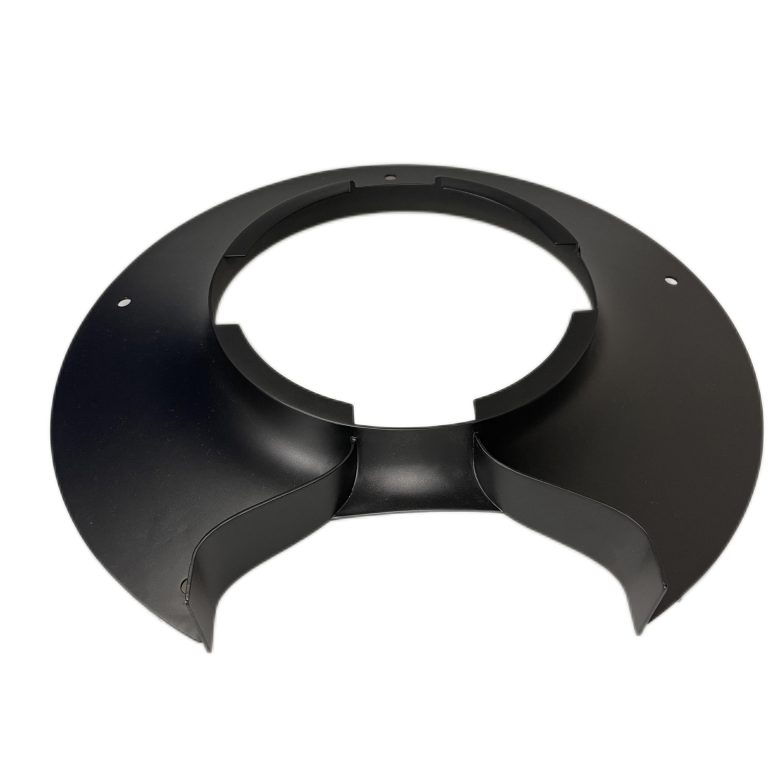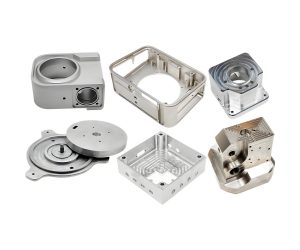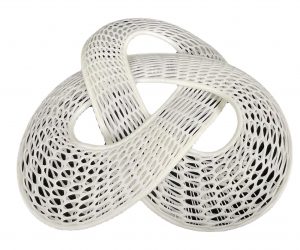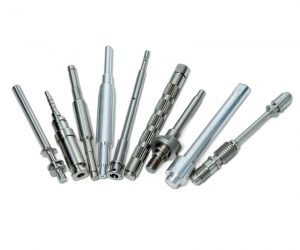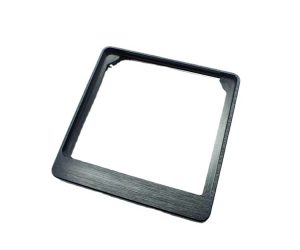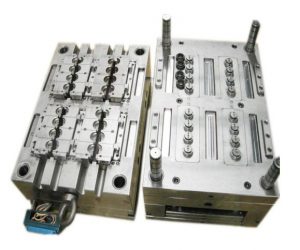Introduction to Plastic Injection Moulding
Plastic injection moulding is a cornerstone technology in modern manufacturing, playing a pivotal role in producing a vast array of plastic products that permeate every aspect of our lives. From the smallest components in electronic devices to large automotive parts, this manufacturing process has revolutionized the way plastic items are created. Its significance lies in its ability to achieve high - volume production with consistent quality, making it an essential technique for industries aiming to meet the demands of a global market.
This method involves injecting molten plastic material into a mold cavity under high pressure. Once the plastic cools and solidifies within the mold, the final product, which has taken on the shape of the mold, is ejected. This seemingly simple process, however, is a complex interplay of materials science, engineering precision, and manufacturing know - how. In the following sections, we will delve into the different types of plastic injection moulding, its unique characteristics, the essential components involved, and the critical aspects of quality control. Understanding these elements is crucial for manufacturers, product designers, and anyone interested in the world of plastic product manufacturing to make informed decisions and achieve optimal results.
Types of Plastic Injection Moulding
Conventional Injection Molding
Conventional injection molding is the most basic and widely used type. The process begins with plastic pellets being fed into a heated barrel. Here, the pellets are melted into a viscous liquid state. A screw mechanism then forces the molten plastic under high pressure into a pre - designed mold cavity. Once inside the mold, the plastic cools and solidifies, taking on the exact shape of the cavity. After solidification, the mold opens, and the finished plastic part is ejected.
This method is ideal for producing a wide range of products, from simple household items like plastic cups and containers to more complex components such as toys and small electronic enclosures. Its advantages include high - speed production, which allows for large - scale manufacturing. The process can achieve high precision, ensuring consistent product dimensions. However, it also has some limitations. For example, it may not be the best choice for products with extremely complex internal structures, as the mold design can become overly complicated and costly.
Over Molding & Insert Molding
Over molding involves adding a layer of a second material over an existing component. This is often used to enhance the functionality or aesthetics of a product. For instance, in the production of toothbrushes, a soft rubber material is over - molded onto a hard plastic handle. This provides a better grip for the user. Another example is in the manufacturing of some electronic devices, where a protective rubber layer is over - molded onto a plastic casing to improve shock resistance.
Insert molding, on the other hand, inserts a pre - formed component (such as a metal insert) into the mold before injecting the plastic. This is commonly used when a product requires the strength or electrical conductivity of a metal part integrated with the advantages of plastic. For example, in the production of automotive connectors, metal pins are inserted into the mold, and plastic is then injected around them to create a durable and functional connector.
2 - Shot/3 - Shot Molding
2 - shot and 3 - shot molding, also known as multi - shot molding, are techniques used to create products with multiple colors or materials. In 2 - shot molding, two different types of plastic materials or two different colors of the same material are injected into the mold in two separate shots. This allows for the creation of more complex and visually appealing products. For example, some smartphone cases are made using 2 - shot molding, with a hard outer shell and a soft inner lining for better protection.
3 - shot molding is a more advanced version, where three different materials or colors are used. It is often used in the production of high - end consumer products or medical devices that require multiple components with different properties to be integrated into one part. A product example could be a complex medical instrument with different functional parts made of different plastics in a single unit.
Thermo - set Injection Molding
Thermo - set injection molding is distinct from other types as it uses thermosetting plastics. These plastics, once heated and cured in the mold, undergo a chemical change and cannot be remelted. Materials like epoxy, phenolic, and urea - formaldehyde are commonly used in this process. The curing process is usually achieved through the application of heat and pressure within the mold.
This type of molding is suitable for products that require high heat resistance, excellent electrical insulation, and dimensional stability. Examples include electrical switch components, automotive brake parts, and some types of kitchen utensils. Compared to other types, thermo - set injection molding has a longer cycle time due to the curing process. However, the resulting products offer unique properties that are difficult to achieve with other plastics.
Silicone Injection Moulding
Silicone injection moulding uses silicone rubber, which has unique properties such as high flexibility, excellent heat resistance, and biocompatibility. This makes it ideal for applications in the medical, food, and automotive industries. In the medical field, it is used to produce items like catheters, surgical gloves, and baby bottle nipples due to its non - toxic and hypoallergenic nature.
In the automotive industry, silicone is used for gaskets and seals because of its ability to withstand high temperatures and maintain its elasticity over time. The process of silicone injection molding is similar to traditional injection molding, but special considerations need to be taken due to the unique rheological properties of silicone rubber. For example, the injection pressure and temperature need to be carefully controlled to ensure proper filling of the mold and a high - quality final product.
Characteristics of Plastic Injection Moulding
High - Volume Production Efficiency
Plastic injection moulding is renowned for its high - volume production capabilities. Once the mold is set up, the process can achieve an extremely fast cycle time. For example, in the production of small plastic components like pen caps, a modern injection molding machine can complete a cycle in as little as a few seconds. In a high - volume manufacturing setting, a single injection molding machine can produce thousands of parts per hour.
When compared to other manufacturing methods, such as traditional machining or manual assembly, the efficiency of plastic injection moulding becomes even more apparent. Machining processes often require multiple steps and significant amounts of time to shape a part from a raw material block. Manual assembly is labor - intensive and time - consuming, with a much lower output rate. For instance, if a company needs to produce 100,000 plastic toy parts, injection moulding can complete this order in a matter of days or even hours depending on the complexity of the part and the number of machines in operation. In contrast, manual assembly might take weeks or months to reach the same production volume. This high - volume production efficiency not only meets the large - scale market demands but also helps in reducing the unit production cost, making it an economically viable option for mass - produced plastic products.
Design Flexibility
One of the most remarkable features of plastic injection moulding is its design flexibility. It can bring to life products with the most intricate designs. For example, consider a smartphone case. Injection moulding allows for the creation of cases with precise cut - outs for ports, buttons, and cameras, along with complex patterns and textures on the surface. The case can also have a combination of different thicknesses in various areas to provide optimal protection and a comfortable grip.
Another example is a multi - functional kitchen utensil. Injection moulding can integrate multiple functions into one part, such as a spoon - spatula hybrid with a unique shape that combines the scooping ability of a spoon and the flipping function of a spatula. The handle can be ergonomically designed with curves and grooves for a better hold, and the head can have specific shapes for different cooking tasks.
[Insert a picture of a complex - designed smartphone case here]
[Insert a picture of a multi - functional kitchen utensil here]
In addition, undercuts, which are features that would be difficult or impossible to create with other manufacturing methods, can be easily achieved in injection moulding. Undercuts are often used to create snap - fit mechanisms in products, allowing parts to be assembled without the need for additional fasteners like screws or adhesives. This not only simplifies the assembly process but also reduces the overall cost of the product.
Material Versatility
A wide range of plastic materials can be used in injection moulding, each with its own unique properties and suitable applications.
Polyethylene (PE): This is a common and versatile plastic. Low - density polyethylene (LDPE) is known for its flexibility and transparency, making it ideal for products like plastic bags, food packaging films, and some types of toys. High - density polyethylene (HDPE), on the other hand, has higher strength and rigidity, and is often used in the production of plastic pipes, large containers, and automotive parts where durability is required.
Polypropylene (PP): PP is a lightweight plastic with good heat resistance. It can withstand temperatures up to around 130°C, which makes it suitable for products that need to be used in hot environments, such as microwave - safe food containers. It also has excellent chemical resistance, making it a popular choice for chemical storage containers and some automotive components.
Polycarbonate (PC): PC is a high - performance plastic with exceptional impact resistance. It is often used in applications where safety is crucial, such as in the production of safety helmets, eyewear lenses, and automotive headlamp lenses. Its high optical clarity also makes it suitable for optical discs like CDs and DVDs.
Acrylonitrile Butadiene Styrene (ABS): ABS is a widely used engineering plastic. It combines the strength and rigidity of acrylonitrile, the toughness of butadiene, and the processability of styrene. ABS is commonly used in the manufacturing of electronic device housings, such as those for computers, televisions, and game consoles, due to its good mechanical properties and ability to be easily molded into complex shapes.
Thermoplastic Elastomers (TPEs): TPEs have properties similar to both rubber and plastic. They can be used to create products that require both flexibility and the ease of processing associated with plastics. For example, they are used in the production of grips for tools, shoe soles, and some automotive interior components, providing a soft and comfortable touch while still maintaining the durability of a plastic product.
Components of Plastic Injection Moulding
Mould
The mould is the heart of the plastic injection moulding process, as it determines the final shape and features of the plastic product. It is typically made of high - quality steel or aluminum, which can withstand the high pressure and temperature during the injection process.
A mould consists of two main parts: the stationary half (also known as the cavity half) and the moving half (also known as the core half). When the mould is closed, the cavity and the core come together to form a precise cavity that is the inverse of the desired product shape. For example, if you are producing a plastic bottle cap, the cavity will have the outer shape of the cap, and the core will form the inner threads and the central part of the cap.
[Insert a simple diagram showing the structure of a typical injection mould here, with labels for the cavity, core, ejector pins, etc.]
Moulds also often include additional components such as ejector pins. These are small rods that are used to push the finished plastic part out of the mould after it has cooled and solidified. Ejector pins are carefully positioned in the mould to ensure that they do not damage the product during ejection. Another important part is the runner system, which is a network of channels that guides the molten plastic from the injection unit into the mould cavity. The runner system is designed to distribute the plastic evenly and efficiently, minimizing waste and ensuring consistent product quality.
Injection Unit
The injection unit is responsible for melting the plastic raw material and injecting it into the mould. It consists of several key components. The hopper is where the plastic pellets are initially loaded. From the hopper, the pellets are fed into a heated barrel. Inside the barrel, a screw rotates. As the screw rotates, it not only conveys the plastic pellets forward but also compresses and shears them. This mechanical action, combined with the heat from the barrel, melts the plastic pellets into a viscous, molten state.
Once the plastic is molten, the screw acts as a piston. It moves forward rapidly, forcing the molten plastic under high pressure through a nozzle and into the runner system of the mould. The injection pressure can vary widely depending on the type of plastic, the complexity of the mould, and the size of the product. For example, when injecting a small, simple part made of low - viscosity plastic, the injection pressure might be in the range of 50 - 100 MPa. However, for a large, complex part made of a high - viscosity engineering plastic, the injection pressure could be as high as 200 - 300 MPa.
The injection unit also includes temperature control mechanisms. These are crucial to ensure that the plastic is melted to the correct temperature. Different plastics have different melting points. For instance, polyethylene (PE) has a melting point in the range of 110 - 130°C, while polycarbonate (PC) melts at around 220 - 260°C. By precisely controlling the temperature of the barrel, the injection unit can ensure that the plastic flows smoothly into the mould and solidifies properly.
Clamping Unit
The clamping unit plays a vital role in the plastic injection moulding process by holding the mould firmly closed during the injection and cooling phases. This is essential to prevent the mould from opening under the high injection pressure, which could lead to product defects such as flash (excess plastic seeping out between the mould halves) or incomplete filling of the mould cavity.
The clamping unit consists of a stationary platen, a moving platen, and a clamping mechanism. The mould is mounted between the two platens. When the mould is ready to be filled, the clamping mechanism exerts a large clamping force to bring the moving platen towards the stationary platen, tightly closing the mould. This clamping force is typically measured in tons. For small injection moulding machines used for producing simple, small - scale products, the clamping force might be in the range of 5 - 50 tons. However, for large - scale industrial injection moulding machines used to produce large automotive parts or appliance components, the clamping force can be several hundred or even over a thousand tons.
There are different types of clamping mechanisms, with hydraulic and toggle - type systems being the most common. Hydraulic clamping systems use hydraulic cylinders to generate the clamping force. They offer smooth and precise control, making them suitable for a wide range of applications. Toggle - type clamping systems, on the other hand, use a mechanical linkage mechanism to amplify the force. They are known for their high - speed operation and energy - efficiency. The choice between the two depends on factors such as the size of the mould, the production requirements, and the cost - effectiveness.
Quality Control in Plastic Injection Moulding
Process Monitoring
During the plastic injection moulding process, continuous monitoring of key parameters is essential to ensure product quality. These parameters include:
- Temperature: This is crucial as different plastics have specific melting and processing temperatures. For example, the barrel temperature needs to be precisely set according to the plastic material used. If the temperature is too low, the plastic may not melt properly, leading to uneven filling of the mould and defects in the final product. On the other hand, if the temperature is too high, the plastic may degrade or burn.
- Pressure: Injection pressure and holding pressure are two important pressure - related parameters. Injection pressure ensures that the molten plastic fills the mould cavity completely. Holding pressure is applied after injection to compensate for the shrinkage of the plastic as it cools and solidifies. If the injection pressure is too low, the mould may not be filled entirely, resulting in short - shot products. If the holding pressure is not properly adjusted, the product may have sink marks or dimensional inaccuracies.
- Injection Speed: The speed at which the molten plastic is injected into the mould can affect the quality of the product. A too - slow injection speed may cause the plastic to cool prematurely, leading to flow marks or incomplete filling. A too - fast injection speed, however, can create high shear forces that may damage the plastic or cause air entrapment in the mould.
- Cycle Time: The cycle time, which includes the injection, cooling, and ejection phases, must be consistent. Variations in cycle time can lead to inconsistent product quality. For instance, if the cooling time is too short, the product may not have fully solidified, causing it to deform during ejection.
Modern injection moulding machines are often equipped with sensors and control systems that can monitor these parameters in real - time. Data from these sensors can be used to create control charts, which help in quickly identifying any trends or deviations from the normal process conditions.
Corrective Actions
When quality issues are detected during process monitoring or inspection and testing, immediate corrective actions must be taken. The first step is to identify the root cause of the problem. This may involve analyzing the process parameters, the condition of the mould, the quality of the raw materials, or the operation of the injection moulding machine.
Once the root cause is determined, appropriate corrective measures can be implemented. For example, if a problem is caused by incorrect temperature settings, the temperature can be adjusted accordingly. If a mould defect is identified, the mould may need to be repaired or replaced. In the case of material - related issues, the raw material supplier may need to be contacted to resolve the problem.
In addition to taking immediate corrective actions, it is also important to implement preventive measures to avoid similar quality issues in the future. This may involve updating the standard operating procedures, providing additional training to the operators, or improving the maintenance schedule of the equipment. Quality control in plastic injection moulding is an ongoing process of continuous improvement, aiming to minimize defects, reduce waste, and enhance overall product quality.
Yigu Technology's Perspective
As a non - standard plastic metal products custom supplier, Yigu Technology deeply understands the significance of plastic injection moulding. We leverage advanced technologies and a wealth of experience to provide high - quality customized solutions. Our state - of - the - art facilities enable us to handle complex mould designs with precision, ensuring that every product meets the strictest quality standards.
What sets us apart is our commitment to innovation. We constantly explore new materials and processes to optimize the performance of plastic injection - moulded products. Our team of experts closely collaborates with clients from the initial design phase, offering valuable insights to enhance product functionality and aesthetics. Additionally, we place great emphasis on cost - effectiveness, striving to deliver high - quality products at competitive prices. Whether it's a small - scale prototype or large - volume production, Yigu Technology is dedicated to providing top - notch services and products that exceed customer expectations.
